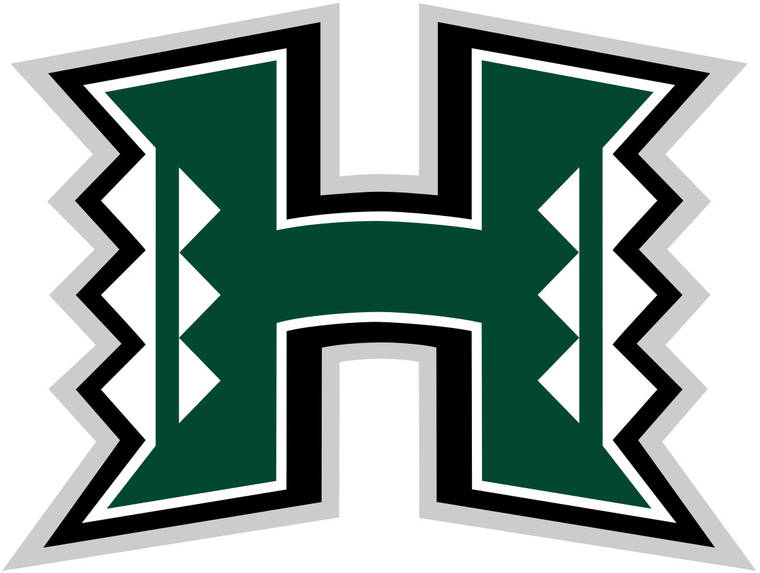A University of Hawaii football player has tested positive for COVID-19, the school announced Sunday, pushing back the start of fall camp to Tuesday.
UH did not release the player’s name, citing privacy laws, but noted the student-athlete was held out of practice and self-isolated since first reporting symptoms last week during the team’s daily health check-in. The player is being monitored by the UH medical staff and is experiencing mild symptoms, the release said. The positive result came back Saturday.
All 116 student-athletes scheduled to participate in fall camp had already tested negative in the first round of “surveillance” testing in late July, according to the school. The team and coaching staff have started NCAA recommended, weekly testing for the virus and continue to participate in daily, mandatory health screening.
When camp does start Tuesday after a one-day delay, the itinerary will not vary much from the organized workouts the past two weeks.
“Basically, the only difference (Tuesday) is that we’ll have helmets on,” head coach Todd Graham said. “We’re basically still non-contact (in drills). Still doing basically the same things we’re doing now except we’ll have a little more time. That’s about it.”
In early July, after 16 weeks of restrictions, the NCAA allowed football teams to have in-person meetings and workouts. On July 17, UH’s workouts were expanded to include walk-through sessions.
The Warriors had to postpone the start of training camp from Friday because last week’s hurricane threat altered the workout schedule and caused the cancellation of a walk-through session.
For training camp, there is a two-day “acclimation period” during which players may not be equipped with full pads.
“The normal (non-contact) deal is for two days,” Graham said. “We’ll probably be longer than that. Not a lot of changes. A little bit more time (on the practice field) and a helmet on, but basically doing very similar to what we’re doing now — meetings, teaching, and just working to get better every day.”
Graham, who was hired as head coach in January, oversaw the offseason conditioning program for six weeks until mid-March, when the pandemic led to limiting campus access and moving classes to online instruction. There was nearly a 16-week period when the coaches’ contact with players was only through Zoom and video chats.
To promote unity, the Warriors formed leadership and mentorship pods. To evaluate personnel, the coaches reviewed videos of UH’s games and practices the past two seasons. To assess little-used or injured players, the research went back to videos of their high school games. There is no firm depth chart entering training camp.
“Our order from which we’re working right now is based on the film we watched,” Graham said.
“The only thing we have right now is the film from last year — game film and practice film we’ve looked through — and working with them the very short time we’ve had. The guys are working great. I’m very pleased with their effort. They’re a close-knit bunch. I’m very impressed with the football intellect and how they’ve picked up things. Just continuing to progress.”
The Warriors lost Cole McDonald, their primary starting quarterback the past two seasons, to the NFL. Cornerback Rojesterman Farris, a three-year starter at cornerback, is now with the Atlanta Falcons. But the Warriors return nine offensive linemen who started games in 2019. And Chevan Cordeiro, who is 4-0 as a starter, has been proclaimed the No. 1 quarterback. The other quarterbacks on the training-camp roster released Friday are Justin Uahinui, Boone Abbott, Kamali‘i Akana, Armani Edden and Jake Farrell.
Among the newcomers are Dior Walker-Scott, a walk-on receiver who was featured prominently on Netflix’s recently released “Last Chance U,” and Aaron Cephus, a graduate transfer from Rice.
While seeking to flesh out the schedule, the Warriors, for now, open the season on Sept. 26 against FCS member Robert Morris.






